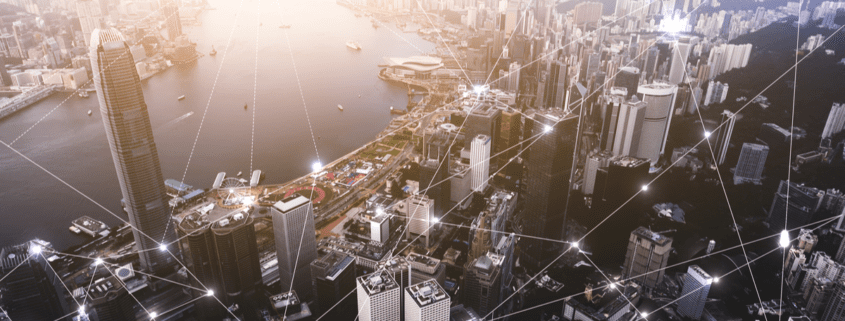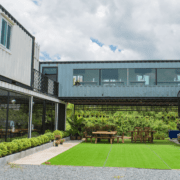Is Poor Infrastructure the Achille’s Heel of Secondary CRE Market Growth?
It is now widely accepted among CRE professionals that the strain of late-cycle hyper supply is fully upon us. Increased supply paired with a high occupancy rate means that many markets have reached a peak, causing a plateau in possible NOI due to stagnant demand. Because of lower yields, many investors are seeking out diversification opportunities in secondary markets. These markets include mid-size cities experiencing incremental growth year-over-year, manifesting as rising populations of young professionals and families, new businesses taking form, and existing business expansion. Cities with well-established and scalable infrastructure — the necessary systems that must be in place to ensure that a city is able to operate and serve its residents — can grow quickly with thriving local economies.
What sets secondary markets apart from primary markets is their relative affordability, particularly with regards to lower cost of living and doing business. Some characteristics of secondary markets include decreasing office space vacancies, fewer multifamily vacancies, and strengthening of the housing market – all desirable conditions for generating returns. However, as populations continue to swell in secondary markets and multifamily and office assets experience a lift in demand, there is also increasing strain on infrastructure: roads, utility services, waste removal, communication systems, and the physical systems that support these services.
Markets that are experiencing growth during this stage of the CRE cycle offer the best chance of risk-adjusted NOI. But what happens when existing infrastructure doesn’t scale with a growing population? Read ahead to find out how infrastructure can present both a problem and an opportunity for CRE professionals in up-and-coming markets.
Secondary Markets: Growing Cities, Growing Problems
Secondary markets are having a moment, finishing 2018 with preferential cap rates averaging 6.78% and outperforming both top-tier and major markets, which capped at 3.68% and 5.93%, respectively. Assets in these markets also tend to be more liquid, making them even more attractive to investors. However, costly improvements then become necessary to ensure continued market expansion. For example, by the year 2025, the estimated cost of repairing all outdated roads, bridges, and dams in the US is over $2.4 trillion. Failure to scale infrastructure with other asset classes can result in problems that ultimately bottleneck growth in the entire market.
Traffic Nightmares
Life in highly populated areas requires large volumes of people to travel at peak times. Kids must get to school, adults must get to work, and other tasks must be completed within the same amount of time by the majority of local residents. Further, densely populated areas tend to spread further from center city during phases of rapid growth, a phenomenon known as urban sprawl. This situation typically leads to greater automobile-dependency as pedestrian and bike travel are not options for most due to the distance required to get to work or school. Throw in the congestion caused by the increase in travelers and you have a recipe for bumper-to-bumper rush hours and thousands of angry commuters.
This problem is not an easy one to solve, as expanding road capacity by adding lanes would require the acquisition and demolition of buildings and would ultimately result in underutilized roads during non-peak times. Mass transit infrastructure solutions such as train and bus lines could curb traffic but are a step behind population size in most secondary markets. Traffic related hurdles demonstrate how poorly built out infrastructure can negatively impact the desirability of a city.
Disposal Dysphoria
More people means more waste. To remove, transport, process, and store or destroy waste products can be costly and requires specialized equipment and facilities. On a global scale, the amount of trash generated by urban areas doubled between 2002 and 2012. Trash has to go somewhere and continues to amass because it is constantly produced by human activity. Failure to scale waste disposal infrastructure can lead to contaminated water supplies and an increased flood risk due to garbage clogging storm drains.
The rising popularity of single-use plastics and other disposable convenience products adds to the overabundance of waste products that must be appropriately disposed. These discarded products, packaging, and even organic materials all require additional infrastructure that just isn’t keeping pace with population size. Processing waste is a necessity as populations rise to prevent illness, insect and rodent infestations, and litter, but some cities are struggling to keep up with ever-growing waste production caused by rapid expansion or to implement sustainable solutions.
Rising Utility Expectations
Utilities no longer simply include water, electricity, and the occasional natural gas service. There was a time in which these services didn’t exist at all, but now they have become the status quo. For example, due to the digital age, residents now expect high-speed internet connectivity, and a growing number of other services are quickly coming to market and may soon be non-negotiable, such as solar energy. Meeting these changing expectations as recent innovations take their place alongside water and electric requires supplementary infrastructure measures to be taken into account.
Further, it can be even more challenging to provide these services alongside others that have been the norm for decades because there is no existing framework – they must be built from scratch. For example, repairs and upgrades to existing sewer systems can at least be implemented as-needed to a system that already exists. When new services become utilities, an entirely new system must be installed on a mass scale, which is more costly and time-consuming.
These types of issues can deter people from moving to cities considered secondary markets and can hinder growth. These cities may be more prone to being congested, dirty, and ill-equipped to handle their populations when growth happens at a fast pace. In spite of challenges, though, poor infrastructure may present an additional revenue-generating opportunity.
Infrastructure Investment: A Win-All Solution
So, how can CRE professionals combat infrastructure problems and grow revenue at the same time? Although problematic for the city, poor infrastructure can be a lucrative investment option for commercial real estate professionals. Some are already catching on to this opportunity; infrastructure investment was up by nearly 10% in 2018 over 2017.
There are several ways that infrastructure investing can be beneficial to both investors and cities struggling to scale. First, private companies can agree to maintain and operate toll roads or bridges, relieving the city of this responsibility while reaping the profit of daily use. The city can then reallocate maintenance funds to other initiatives. Dispersal of government funds can go toward improvements outside the CRE sector that improve quality of life for residents and contribute to further growth.
Second, infrastructure investment can help to insulate against risk through portfolio diversification. The resulting improvements can also have a positive impact on other asset classes, as it is foundational to operations. From retail to office to multifamily, virtually every land use study has come to the conclusion that infrastructure investments and improvements drive property values, boost economic growth, and improve access to markets and services.
Lastly, infrastructure is second only to self-storage in terms of its low volatility and potential for generating low-risk returns. Slow infrastructure growth may currently be a weakness of secondary markets, but continued investment in infrastructure is potentially beneficial to all.
For more reading on this topic, check out Aligning Infrastructure Investment & CRE Development











